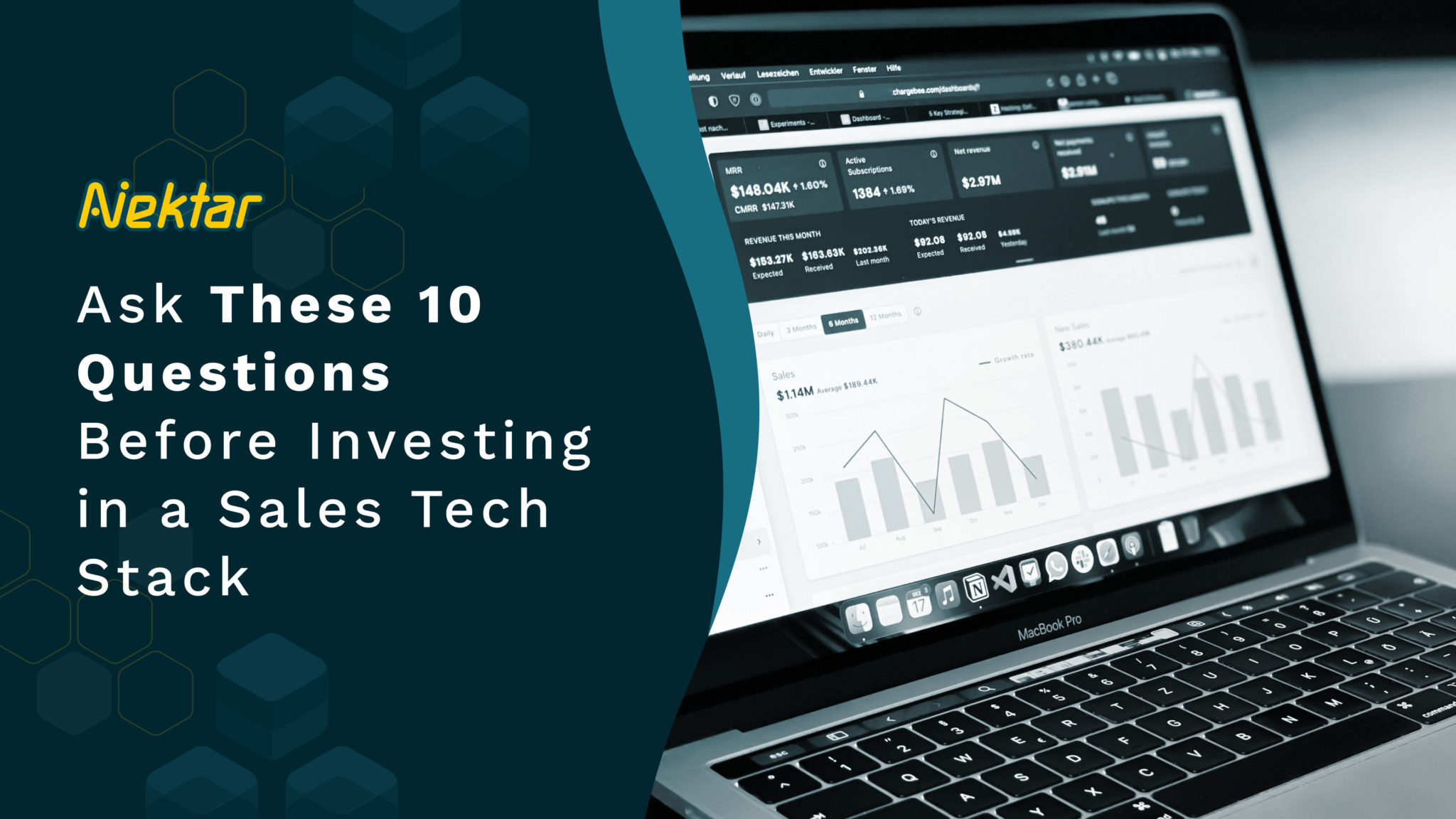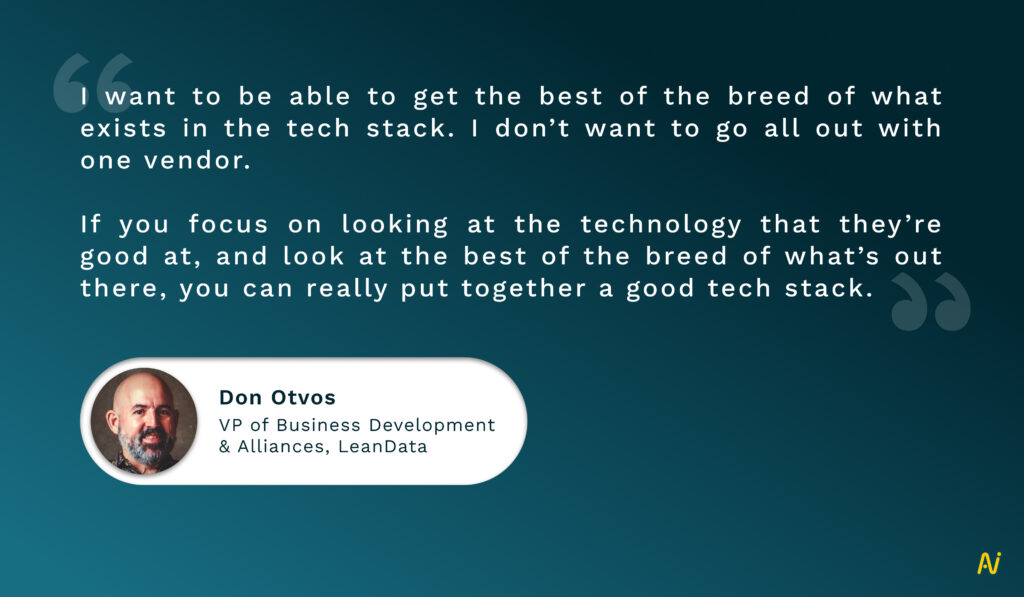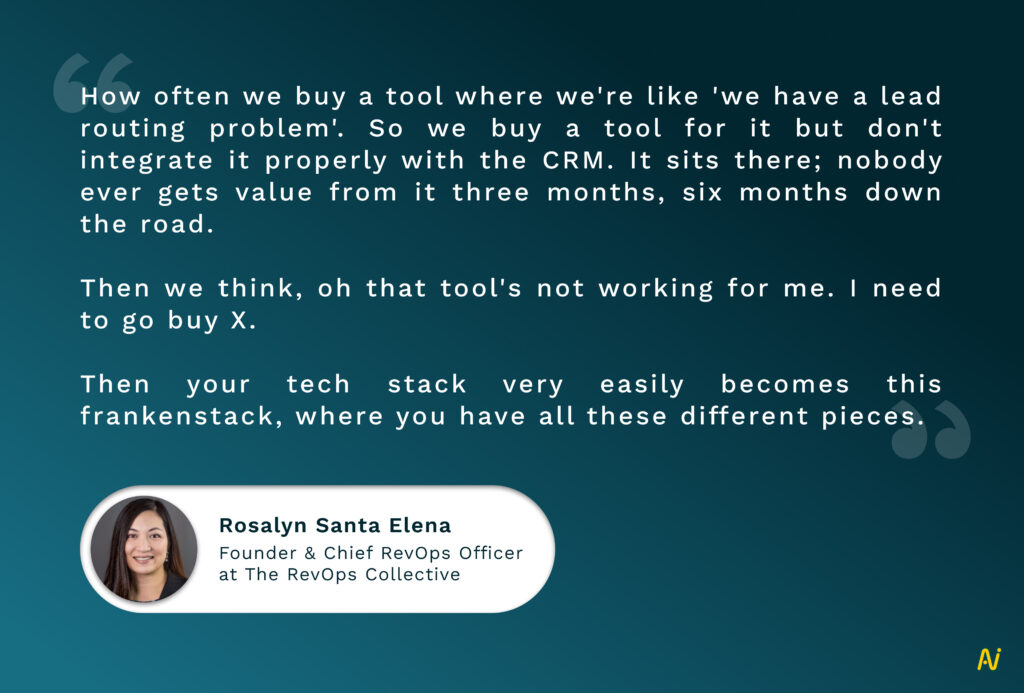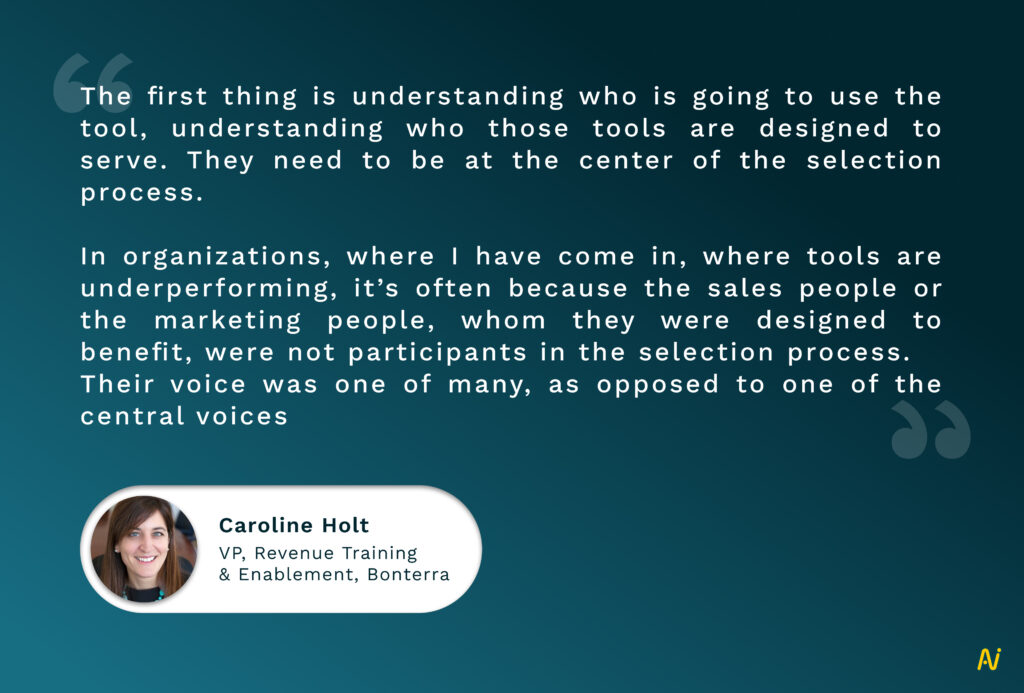82.6 percent of Chief Sales Officers (CSOs) believe a strong sales tool kit is crucial for driving revenues and achieving sales targets. However, only 29 percent of CSOs are satisfied with what they currently have.
57 percent of sales people fail to meet their sales targets according to CSO insights. Filling such cracks in the existing sales processes and consolidating their tech stack are top priorities of revenue leaders for 2023.
Sales tech market is a crowded space, making it even more confusing to select a solution that helps to increase revenues.
Given the current condition, how can CSOs and revenue leaders maximize their tech stack to successfully land more clients?
We have prepared a list of questions that you must ask as a revenue leader before you make a decision to invest in their sales tech stack. Let’s dive deep into each of these.
Before we begin, you might want to check out this interview with Sales Tech expert Don Otvos who shares his expertise on how to build a modern sales tech stack.
10 Questions to Ask Before Investing in a Sales Tool Kit
We have curated a list of 10 question you must ask as a revenue leader before you investing in a sales tool kit. Let’s look at what these are:
1. Is the tool helping you solve your specific problems?
No two companies will have the exact same sales tech stack requirements. Your choice of tool will depend on the specific problems your sales team is facing.
For example, if your reps are unable to meet their quarterly targets, you will need a tool that gives you better deal visibility at every stage of the sales process. On the other hand, a SaaS platform might have a CRM data entry issue, amplifying their need to automate data entry and maintain CRM hygiene.
Identify and document what these specific problems are that your sales reps face, and then go out to purchase a tool that meets those exact needs.
Look deep enough at your own business needs prior to purchase. You need a customised fit, rather than a “nice-to-have” tech stack that does not address your specific pain points.
Going into relevant use case scenarios is crucial when it comes to purchasing potential software.
Here are the top use cases revenue leaders are focusing on in 2023 when it comes to making their sales tech stack investment decisions.
2. Is the tool just reporting process gaps or helping you fill them out too?
Once you’ve mapped your specific problems and found a tool that caters to them, the next step would be to figure out if the tool just reports these problems, or actually helps you solve them.
A lot of tools in sales tech stack cater to management rather than the frontline workers i.e. the sales reps. Because sales reps are doing the groundwork, they know the pain points of their customers better. They need help to solve these issues as and when they arise.
For example, CRM is a tool that largely benefits the management with insights, but sales reps end up spending a lot of time in manual data entry. Invest in a solution that addresses the specific use cases identified by your sales reps.
The tools you select should deliver on the areas it promises to deliver on. See if the vendor lets you run a trial to see how the product actually works out in terms of meeting your specific revenue goals.
3. Can the ROI be measured?
A shiny new tool does not always guarantee financial success.
Return on investment (ROI) is a crucial metric that can often be difficult to capture. The tool you opt for must demonstrate its economic value even before you decide to purchase it.
Assess the likelihood of the tool that you are evaluating to see if it will be a financial positive. The tool you choose should allow you to see this metric before you begin deploying it for your company.
If you see a positive likelihood of a higher ROI, measure the time it will take to reach that number, and if the timeline makes financial sense. Quantify how much the new technology will save you. The number does not have to be exact, but it should give a close enough estimate of what possible tangible return the investment would bring.
4. Does the tool easily integrate with the rest of your systems?
While most sales tech stack tools are designed to digitise your operations, it requires integration with other technologies to be able to deliver on its promises. And integrations are not always a smooth ride.
So before you decide to invest in any new technology, make sure it integrates with your existing systems. Seamless integration would mean less wastage of time and resources spent in figuring out things if something breaks midway.
For example, make sure that data can synchronize seamlessly across your systems before you launch an integration. A lack of a data-driven integration can lead to conflicting data in disparate locations, which can lead to massive confusion and slowing down of operations.
5. How much change management is required?
Any new tool should make processes smoother, rather than making your team’s lives more complicated. It should easily integrate with workflow tools like email and Slack, and add more value to them.
For example, if you are investing in a CRM hygiene tool, it should not make your reps get involved in any extra tasks to make it work. Instead, it should add value to their work by working silently in the background.

At Nektar, we have created our revenue intelligence tool which automatically captures contacts from emails and auto updates them in Salesforce. Reps do not have to install any clunky plugin to run it or invest their time in any kind of update.
Make sure your tools are truly automated and require minimal change management. Any tool that forces your reps into new processes like multiple logins or manual data entry will not be sustainable in the long run, and end up causing more damage than being beneficial.
6. How easy is it to maintain?
Once you’ve figured out that the tool is easy to implement and aligns well with your existing systems, the next step is to connect with sales tech users, sales leaders and subject matter experts to understand how easy or difficult it is to maintain the tool within those systems.
Assess what they are saying and ensure maintenance does not cost an arm and a leg to carry out. The tool should be easy to use as well as useful, and not add countless man hours to just be running properly.
The data should get captured and updated automatically and not require a ton of additional installations. If maintaining the tool becomes too difficult, the sales stack will solve no purpose and slow down even the existing efficient processes.
Once you have a thorough analysis of software maintenance details, identify and engage with vendors based on your assessment.
7. How good is the after-sale experience?
It is extremely important that you can trust the company that creates, upgrades and services your sales tech stack tools. This trust can be built with impeccable before and after-sale experience.
Making sure that customer success is positive not just at the beginning of the buying journey, but continues throughout the lifecycle of the purchase, is crucial. Choosing a company that does not have good service or fail to maintain and upgrade their products can leave you left stranded.
Research on what existing customers have to say about the after-sale service and answer key questions such as:
- Do they provide a consistent after-sale experience across all channels, both online and offline?
- Are there any bad experiences being reported, such as a poor follow-up?
- Do they have self-service options to find answers to common questions?
- Do they understand customer behaviour at every touch point of the after-sale journey?
Make sure the customer success team is willing to get into that long-term relationship and commitment and is ready to deliver a personalized experience across the entire customer journey.
8. Does it provide a single source of truth?
Adding more technology to the sales tech stack might create disparate systems, where reps spend more time moving between tools searching for critical information, rather than having one place where all important information can be collated automatically.
Reps need access to data and analytical insights in real time. For example, if a rep is in the middle of closing a deal, and is unable to access any data needed at that time, it can do significant damage to the deal (and make the rep look uninformed).
Your sales tech stack should offer a single source of truth with minimal requirement of movement to find data at the time of need. All team members must get access to a central location that houses your information and insights, updates it automatically and puts all customer-facing teams on the same page.
For example, Nektar combines data from all sources and company sales playbooks to provide timely and accurate insights on revenue activities, delivering 3 key values -100% CRM hygiene, higher win rates, and increased deal velocity.
9. Does it reduce manual load?
9.1 percent of reps’ time is in spreadsheets as they try to more effectively manage CRM tasks.
Your sales tech stack should enable sales teams to spend more time on selling by organising and automating their sales process. It should get rid of any time-consuming processes and tedious tasks that lead to fatigue and shift the focus from strategic activities.
The tool you choose should also help lay down the foundation of creating effective sales strategies so that reps can spend more time on revenue-generating activities.
Make sure your tool reduces this humongous manual load on reps. Tools like Nektar update CRM automatically without having reps spend five to six hours per week on data entry. This time saved can be used to sell more to prospects.
10. Is it scalable?
Any tool in your sales tech stack must work well for a team of any size. The tool should not only solve for today, but also promise results for the future.
Consider future growth when you choose a tool, and pick a solution that helps you stay consistent as you scale your business.
Switching platforms after a certain level of growth can be a pain, so look for a sales solution that will work in the future. Your sales tech stack should help you build a scalable and repeatable sales engine.

Create Your Own Unique Sales Tool Kit
Creating a sales tool kit that works is critical to achieve your ambitious revenue goals. Revenue leaders understand this, which is why 84 percent of them are evaluating new tools.
But your sales tool kit will only deliver results if it is chosen with careful intent. All that glitters is not gold, and the confusing landscape of sales tech can make it hard to choose the right solutions.
It’s not about what others are doing, but what tech solves your specific pain points. Your tech stack should help you sell more and keep your reps productive.
Take your time, and make the right choice.










